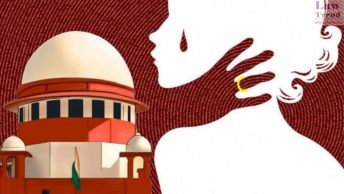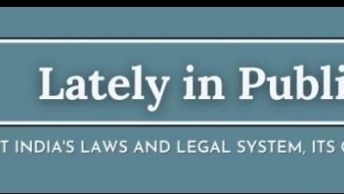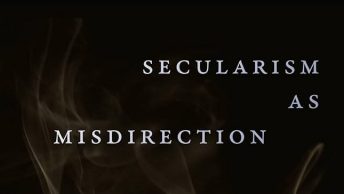Supreme Court’s summary dismissal of a Muslim student’s petition against his school’s decision to remove him from the school raises disturbing questions about the court’s attitude to secularism. Apart from Justice Katju’s inappropriate observations equating Talibanisation with growing beard, the case raises interesting questions of law which could have given an opportunity to the Court to examine, and clarify.
First, the facts of the case. Mohammad Salim was a student of Nirmala Convent Higher Secondary School, Sironj, Vidisha district, Madhya Pradesh from 1997. He passed 9th class in 2008. As he attained 16, his beard grew naturally. From the academic session 2008-09, the school introduced new rules and regulations, duly published in the school diary, given to every student. Under Rule 18 of these Rules and Regulations, the boys are required to have their hair-cut and shaving at regular intervals. The principal of the school prohibited Salim from attending classes, if he refused to comply with this rule. Salim was forced to take his school leaving certificate. The High Court of M.P. (Gwalior Bench) dismissed Salim’s petition on 12.12.2008, on the ground that the school is a minority institution and it has a right to frame its own bye-laws in accordance with the Constitution as held by the Supreme Court in P.A.Inamdar case.
The High Court’s very brief judgment cited P.A.Inamdar to suggest that “minority or non-minority institutions are free to admit students of their own choice including students of non-minority community as also members of their own community from other states, both to a limited extent only and not in a manner and to such an extent that their minority educational institution status is lost; if they do so, they lose the protection of Article 30(1).” The High Court referring to this principle of law laid down in Inamdar, concluded that there was no illegality or irregularity with regard to the regulation framed by the school and that Salim’s admission was rightly cancelled.
In his SLP in the Supreme Court, Salim argued that his case is not related to the policy of reservation and therefore, the paragraph in Inamdar cited by the High Court is not relevant. He also cited Inamdar to drive home the point that the right to administer of a MEI, does not include the right to maladminister. He also pointed out that shaving beard is declared Haraam (sinful) in Islam, especially Hanafi sect to which he belongs; therefore, compelling him to shave his beard is in violation of Article 25.
The question before the Supreme Court was whether a MEI or an unaided institution has a right to impose its own rules and regulations on students against their religious beliefs. The Inamdar judgment, as is clear from the High Court judgment and the Supreme Court’s endorsement of it, has apparently given the impression to the judiciary that a MEI or an unaided institution are under no compulsion to respect the religious beliefs of a student. This is a distortion of the Inamdar judgment. An unaided or a minority institution, as long as it carries the state’s recognition, is bound to follow the Constitutional principles, and respect the religious beliefs of the students.
The Supreme Court’s judgment in Bijoe Emmanuel vs. State of Kerala upholding the right of some students not to sing national anthem on religious grounds is applicable to both minority or non-minority educational institution or aided or unaided institutions, as long as the institution has Government’s recognition. The facts of Salim’s case and the students in Bijoe Emmanuel case are similar; therefore, the Supreme Court must review its dismissal of Salim’s petition, and render justice to him.






Actually, I just hope that neither the petitioner nor his counsel were hurt to hear the Court equate their claim with those of the ‘Taliban’.
Honestly, I dont know if the petitioner should have prevailed here at all. If only he could prevail upon his arguments with reference to what the Islam preaches, everybody here knows that modern jurisprudence hardly supports the literal interpretation of the Quran, others too should prevail upon many other things by just quoting from the Quran – decimating non-believers, polygamy, subjugation of women given their status as property, finance-aversion, non-subscription to any form of entertainment, strict segregation of the sexes and so on.
Related Indian cases:
1. Overweight air-hostesses lose in the Delhi High Court
2. Beard not right in armed forces
The main issue in cases where a right to religion claim is made is (a) whether the standards to determine the legitimacy of a religious requirement should be objective (look to the book/experts) or subjective (the claimant’s reading of her religion); and (b) what is the scope of the right to religion.
To me, if the freedom of religion (including the freedom from religion) is to make any sense, it must be an individual right, and therefore necessarily subjective. But then, it follows that if we are all allowed our private interpretations of our religious beliefs, then the scope of the freedom cannot be too wide (otherwise how will a general system of law function?)
two landmark comparative cases on the point:
1. Employment Division v Smith, US Supreme Court (the peyote case)—for once, I think Justice Scalia makes sense.
2. R (Begum) v Denbigh High (the jilbab case)
What if Salim did not study at a minority institution? What if it was a government school? Or an un/aided private school with no minority status? I really am curious – what would be the legal position then?
If no religious symbolism is tolerated in a public setting like the school, why are we protesting against the French headscarf ban? When we cant set things right in our own country?
On the other hand, if the school was to allow most forms of religion based symbolism, it will be impossible to maintain uniformity of appearence among students.
My personal take is this: If it is something you absolutely have to do in your religion, go ahead, do it. But if its optional or “very desirable”, please keep religion based symbolism private.
And one line that i cannot help recalling – Daadhi mein deen nahi, deen mein daadhee hai. (The religion contains the practice of the beard, the beard does not contain my religion.)
However, the comparison to Taliban is completely uncalled for, and hard to understand.
Inamdar certainly seems irrelevant to the question here. So does Das CJ’s observation in the Kerala education case – it is hard to claim that following the rules and regulations is tantamount to maladministration. Even if the constitutional right to religion has been denied, maladministration may not be the word for it.
Unlike 19(2), 25(1) does not prephrase the morality exception with the word ‘reasonable’. The implication might be that the morality exception is broader here and school regulations aimed at promoting conformity with a dress code fall within its purview.
The matter surely deserved greater attention and scrutiny than what it got. Here there is something of a parallel with the Ram Setu issue. There too, I thought Sorabjee made some interesting arguments with respect to art.25 but the court did not seem inclined to take up the constitutional question at all.
HI, i am working on ethnic and minority rights in the UK. Could you please help me with finding the entire reported judgment in this case. The SC I believe has recently reversed its earlier judgment in this case.
It is here:
http://courtnic.nic.in/supremecourt/temp/dc%20593909p.txt